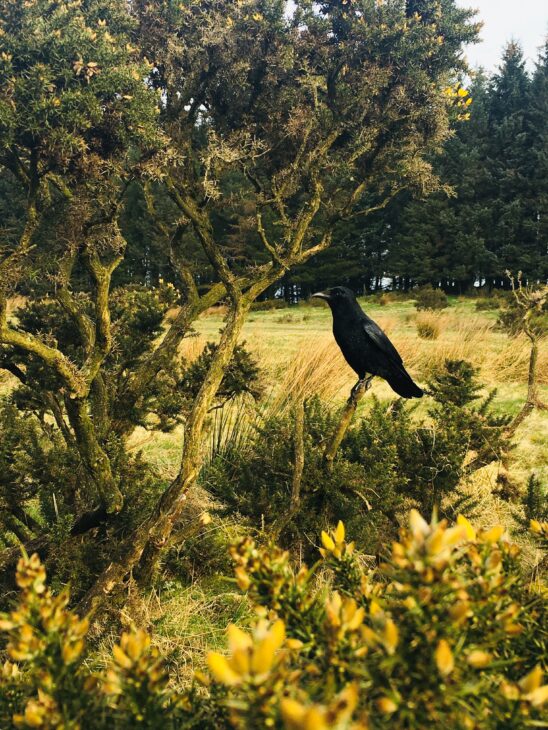The cleverness of corvids
,

By Teri Grieve, Cumbernauld Living Landscape Trainee
Some of the Cumbernauld Living Landscape team were out planting trees with our volunteers last week at Broadwood Loch, so I thought I’d tell you about others in nature that have also been helping our woodlands.
Magpies, crows and jays all belong to a family of species called corvids, and they are very clever birds. They have been shown to uses tools to get food, and pick the right tool for the job. It’s also suggested they identify other birds as thieves and move their stored food to a different location if others have seen them hide it the first time. Several members of this family can also recognise themselves in mirrors and will use reflections to view themselves, just like we do. They are also great at making our habitats better.
Aside from eating berries, whose seeds are then dispersed via the birds’ waste, members of this family, for example crows, make a number of small food deposits, usually of tree seeds, called caches, across large areas in preparation for harder times. This behaviour is known as scatter hoarding and it is very good for our woodlands. These clever birds will store more than they need and often a few caches go untouched. Providing no-one’s spied where the cache was made and it is not found by other creatures, these seeds have a good chance of growing to become trees.
This makes these birds great allies in habitat restoration, spreading seeds across their territories. Oak and pine seeds are nutrient-rich and will kept awhile without rotting, making them perfect to cache. Corvids and tree species have evolved together, and share a mutual relationship that benefits both. Trees get their seeds dispersed, corvids get a meal out the deal, and both their habitats grow.
So, next time you pass under the shade of an oak, allow yourselves to wonder who planted it.
